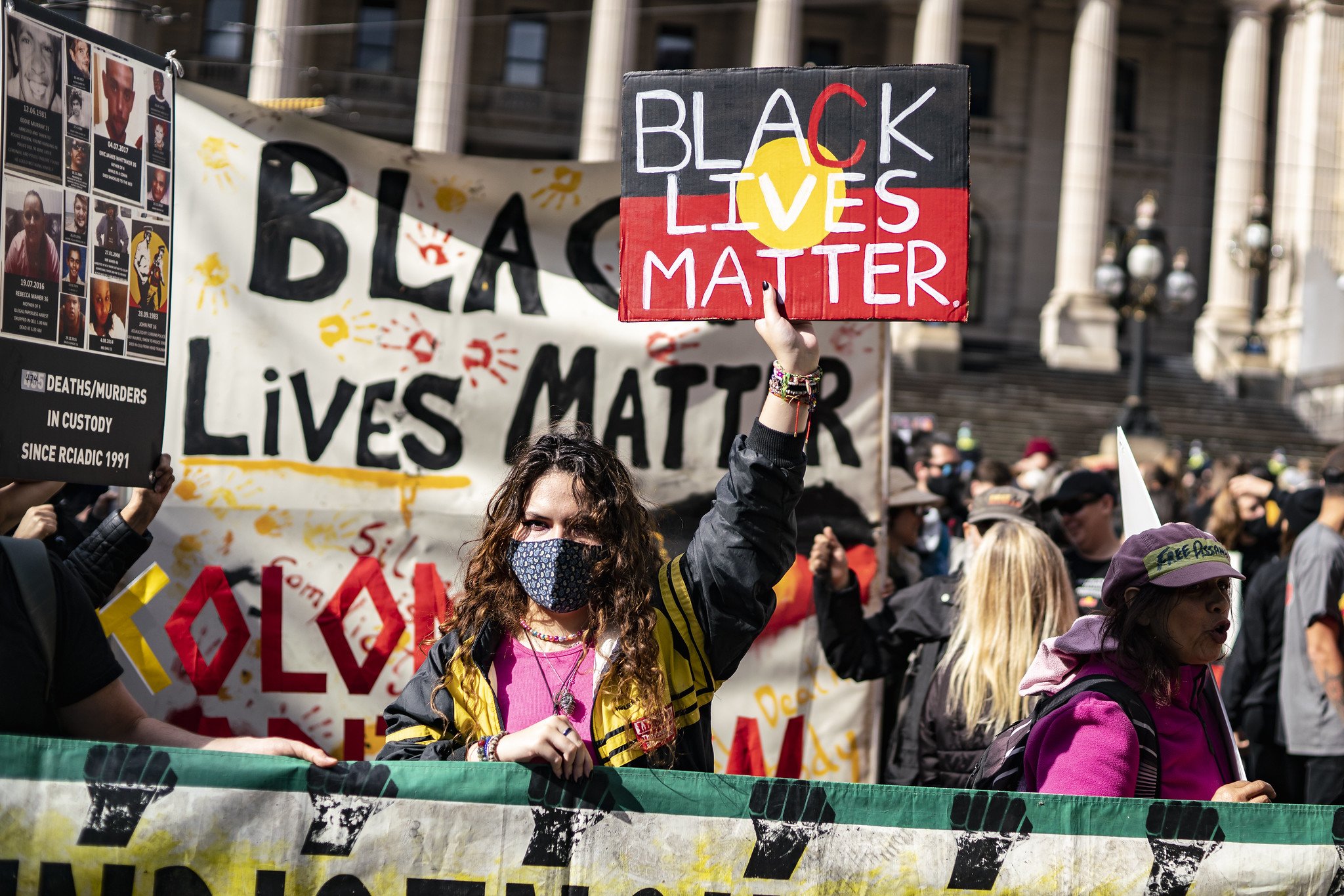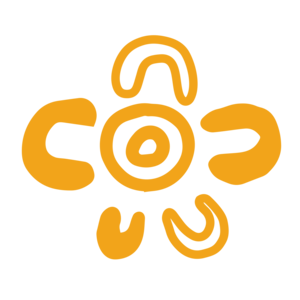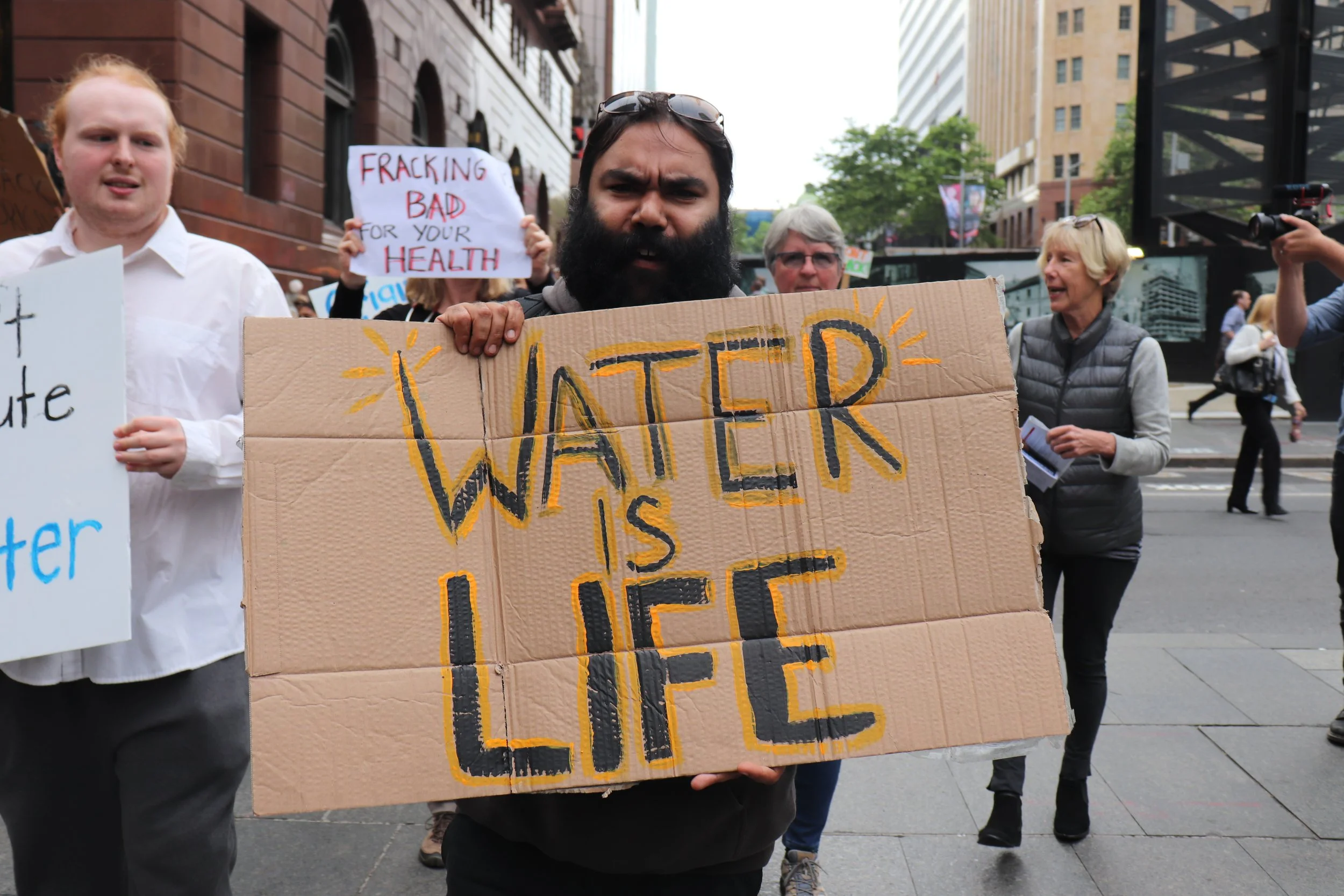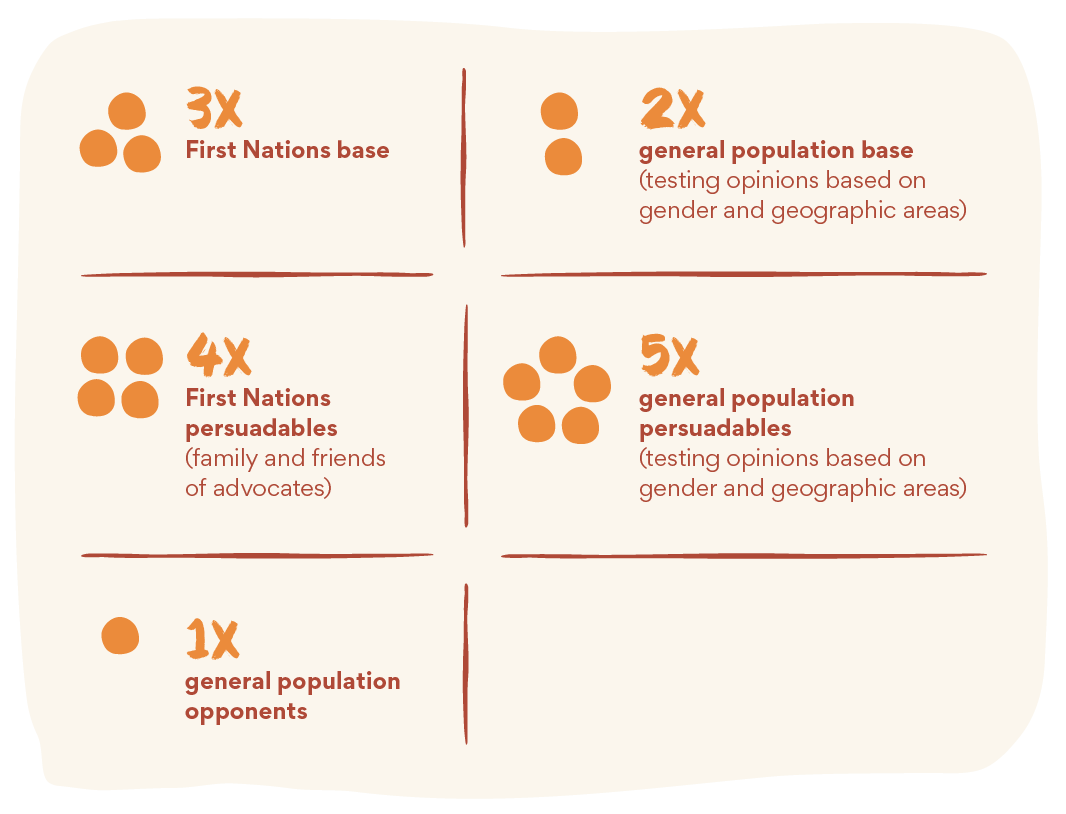
METHODOLOGY
a message is like a baton -
it gets passed on by people.
Most people are either with us, or persuadable - meaning meaning they don’t have strongly held beliefs about us.
When we share compelling, values-based messages with our base, they repeat them — over and over. This is how we reach and persuade the vast majority of the public.
Our Audiences
Across our two research projects, we divided our audience into three categories - the base, persuadables and opponents.
We set out to find the best messages to energise our base, persuadable the majority in the middle, and repel our opponents.
-

Energise our base
The base are people who strongly support self-determination and transformative change for First Nations communities. The most important part of the base is us, First Nations people - although not all First Nations people sit in the base on the issue of the referendum.
If we craft messages that resonate with the base, they are more likely to be shared and heard by persuadables.
Approximately 20% of people are in the base. The base are more likely to include younger people, students, carers, full-time workers and women.
-

Persuade the middle
Persuadables are the majority of people in the middle who don’t have firm views on First Nations people, or self-determination and justice. Our research tells us they agree with conflicting ideas - such as ‘First Nations people have been treated fairly and unfairly’ - and support the ideas they hear most.
Approximately 65% of people are persuadable. The messages we use directly influence these people - so it’s our job to craft messages that win their support.
When it comes to persuadables’ views on the referendum - 61% are leaning towards a Yes vote, 28% are leaning no and 12% are undecided (as at Feb 23).
-

Repel the opposition
Opponents are people who strongly oppose self-determination and justice.
They will never support First Nations policy reform on the grounds of equity or justice, and we don’t need them to.
Approximately 15% of people the community are opponents. They are more likely to be older men and retirees.
A note on first nations audiences
First Nations people are the most important audience in campaigns for transformative change for our people. On the principle of nothing about us without us, we need to invest significant resources in engaging our communities.
Right now, First Nations people are largely persuadable on the referendum, with many undecided on how they’ll vote. Almost half of all First Nations people have heard nothing or very little about the referendum on a Voice to Parliament.
We’re also the most important audience because we’re the most powerful messengers. Our research shows 2 in 3 non-First Nations voters will ask their First Nations friends, colleagues and neighbours how they should vote in the referendum.
The research TIMELINE
Foundational research
In 2019 we kicked off the multi-year project to develop the words that work to build widespread support for First Nations justice and self-determination.
Aug 2019
The Passing the Message Stick Steering Committee convened in August 2019, setting out to shift the mainstream narrative and build widespread public support for First Nations self-determination and justice.
Nov 2019
To kick off the project, 19 First Nations communicators, journalists, advocates and policymakers took part in a five month Message Research and Communications Fellowship to research and analyse the language used on diverse issues.
Mar 2020
Together, Fellows collected and analysed 3,400 messages, to understand how our issues are framed by us and our opponents.
‘Tokens’ (messages collected from sources including mainstream media, social media, pop culture, government websites, academic papers and more) explored language across a diversity of issues, including health, land rights, gender, identity, systemic racism, January 26, water, LGBTQI people, remote communities, housing, the Community Development Program (CDP), law reform and community control.
Jul 2020
The research team then went on a (virtual!) road trip to do nine focus groups with First Nations advocates, the base, persuadables and opponents. This helped us to understand where these audiences are at, and how they respond to our messages and narratives.
Jan 2021
We backed this up with quantitative research, including a 15 minute survey and ‘dial test’. This showed us how audiences responded word by word to the messages we developed. This research gave us rich insights into the messages needed to build widespread support for self-determination and justice.
Aug 2021
We launched the foundational research reaching 15,000 advocates right across the country, including 1500 First Nations and ally advocates who joined our webinars and workshops.

transformative change
With the referendum around the corner, we reconvened to find the messages to build widespread support for the transformative changes our communities have been calling for – treaties, truth-telling, representation and more.
Aug 2022
Our Steering Committee came together to shape the next phase of research – finding the words that build support for transformative change now and beyond the referendum.
sept 2022
We followed this with a language analysis of 1,500 phrases from First Nations organisations, spokespeople, media reporting, pop culture, social media, policy papers and academic reports.
nov 2022
We kicked off the qualitative research phase with 15 focus groups including 8 general population (across base, persuadable and opponents) and 7 First Nations focus groups. These focus groups were conducted between November 22 and January 23, helping us test beliefs across audience segments and the strongest alternative messages to status quo deficit.
feb 2023
We then took our research into the field for the quantitative phase. A representative sample of the population - 3,000 people, including First Nations - completed the 15-minute survey and dial test. The ‘dial survey’ gave us word-by-word data on the messages that resonated most strongly with our base, and performed best with persuadables, while repelling our opponents.
mar 2023
We shared our early research insights with 800 advocates through webinars and presentations.
may 2023
We launched the full research findings with workshops and webinars for 2,000+ advocates across First Nations organisations, ally organisations, journalists, politicians and individual campaigners and organisers.
aug 2023
We launched the final report, summary guide and conversation guide — please share these widely with your friends, family, neighbours and colleagues. Click here to see the full set of resources.
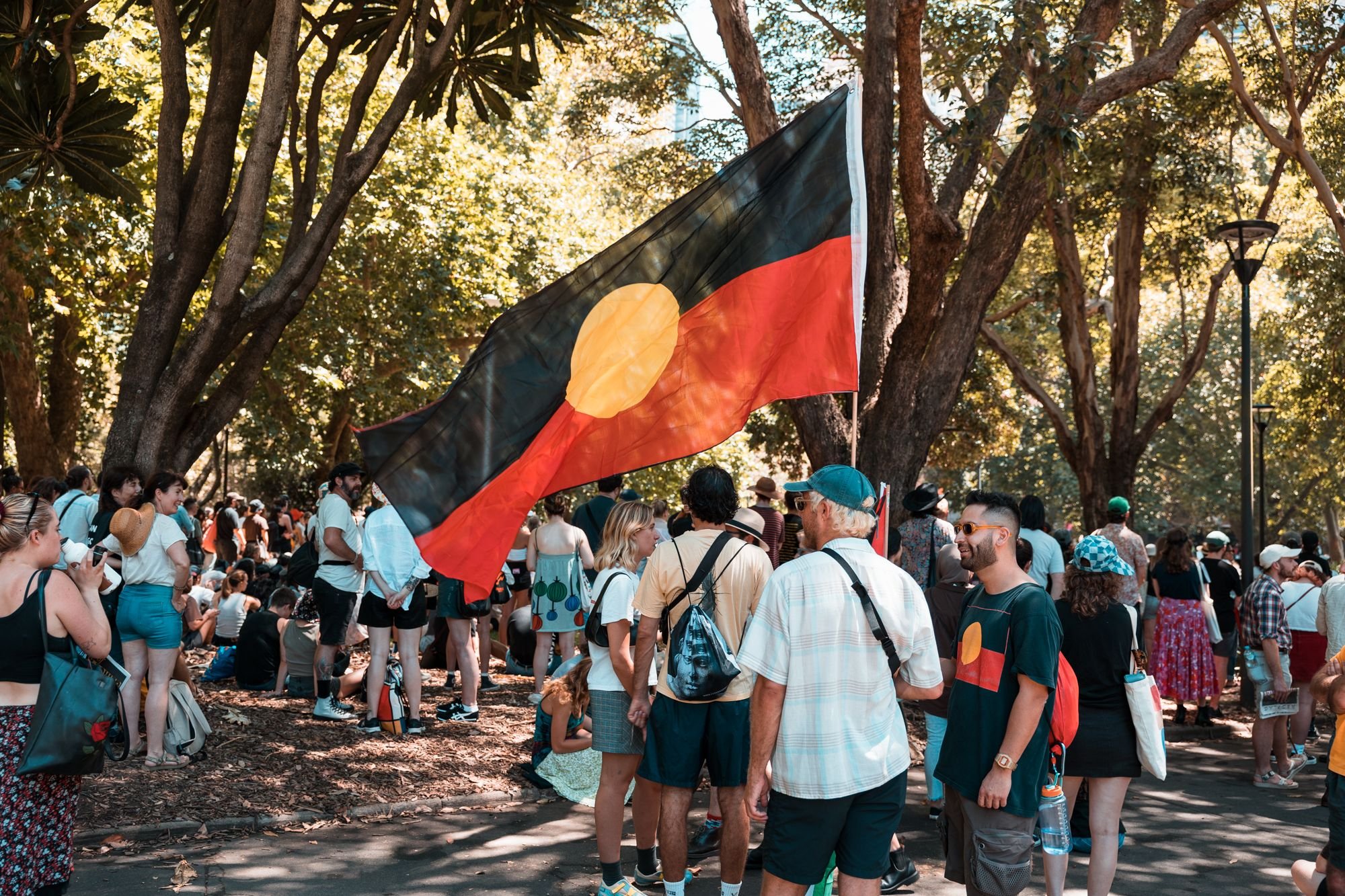
law and justice
Building on the foundational research, we heard a strong demand for message research into framing for law and justice campaigns.
Sept 2022
We collected and analysed 600 message ‘tokens’ on law and justice reform from across media, social media, policy papers and advocacy websites.
Mar 2023
We wrapped up the Law and Justice Messaging and Communications Fellowship with early insights on useful frames and metaphors to embrace in messaging about law and justice.
Nov 2022
We brought together 25 law and justice advocates for a five month Messaging and Communications Fellowship to identify key messaging challenges and opportunities.
Coming up
Over the next 12 months, we will conduct a message research project into law and justice, and develop recommendations for how to build widespread public support for change.
